Related Products
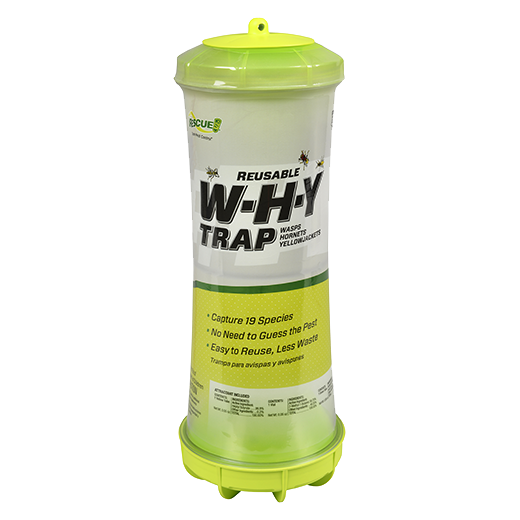
W·H·Y Trap for Wasps, Hornets & Yellowjackets
The W·H·Y Trap has two chambers and three lures to catch 19 d...
VIEW PRODUCT »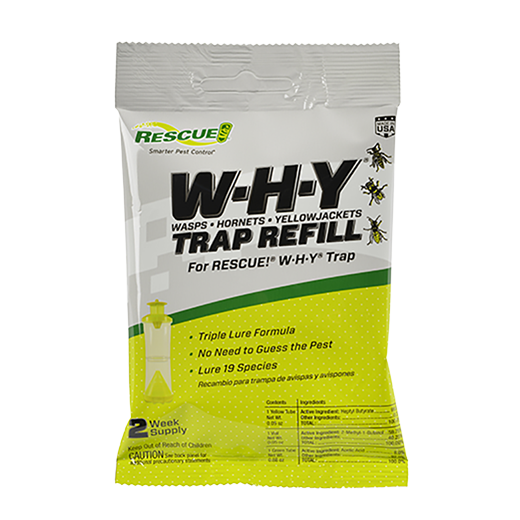
RESCUE! W·H·Y Trap Refill Kit
The RESCUE! W·H·Y® Refill Kit works inside the W&mid...
VIEW PRODUCT »
European Paper Wasp
An invasive species to North America, this opportunistic yellow and black flyer is a yellowjacket impostor. Its species name is Polistes dominula or dominulus.
Geographic Region
Native to Europe, hence the name European paper wasp, their North American territory is growing to encompass nearly all the western, upper midwest and northeastern United States along with Florida. Not to mention their colonization of Hawaii.
Natural Habitat
European paper wasps are best known for their upside-down umbrella-shaped nests under the eaves of homes and other manmade structures. The hollow parts of playground equipment can be choice nesting spots.
Behavior
Like other paper wasp species, Polistes dominula hunt live insects in trees, shrubs and gardens during the day, resting on the nest at night. They only sting if they feel threatened.
Unique Characteristics
Due to their yellow and black coloration and markings, European paper wasps are often mistaken for yellowjackets. The best way to distinguish a paper wasp from a yellowjacket is the position of their legs during flight. Paper wasps dangle their long legs like landing gears, while yellowjackets tuck their legs under when in flight. Paper wasps have a longer, narrower and more separated abdomen with an elongated waist. Their nesting habits are quite different as well. Paper wasp nests tend to be out in the open with a visible comb of cells. Most yellowjackets nest underground or in enclosed spaces with a paper covering around the cells.


 Ant Baits
Ant Baits Birdseed Moth Trap
Birdseed Moth Trap Fly Trap Max
Fly Trap Max Fly Trap, Big Bag
Fly Trap, Big Bag 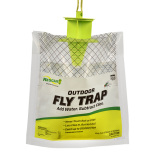 Fly Trap, Disposable
Fly Trap, Disposable Fly Trap, Fruit Fly
Fly Trap, Fruit Fly Fly Trap, POP! Fly
Fly Trap, POP! Fly  Fly Trap, Reusable
Fly Trap, Reusable FlyPad
FlyPad Japanese & Oriental Beetle Trap
Japanese & Oriental Beetle Trap Spider Trap
Spider Trap TrapStik, Carpenter Bee
TrapStik, Carpenter Bee TrapStik, Deck & Patio Fly
TrapStik, Deck & Patio Fly  TrapStik, Indoor Fly
TrapStik, Indoor Fly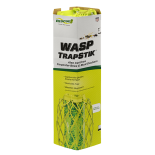 TrapStik, Wasp
TrapStik, Wasp W·H·Y Trap for Wasps, Hornets & Yellowjackets
W·H·Y Trap for Wasps, Hornets & Yellowjackets Yellowjacket Trap, Disposable
Yellowjacket Trap, Disposable  Yellowjacket Trap, Reusable
Yellowjacket Trap, Reusable 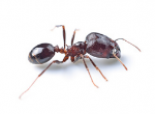 Ants
Ants Biting Flies
Biting Flies Carpenter Bees
Carpenter Bees Flies
Flies Fruit Flies
Fruit Flies Hornets
Hornets Japanese Beetles
Japanese Beetles Mud Daubers
Mud Daubers Oriental Beetles
Oriental Beetles Birdseed & Pantry Moths
Birdseed & Pantry Moths Spiders
Spiders Wasps
Wasps Yellowjackets
Yellowjackets

